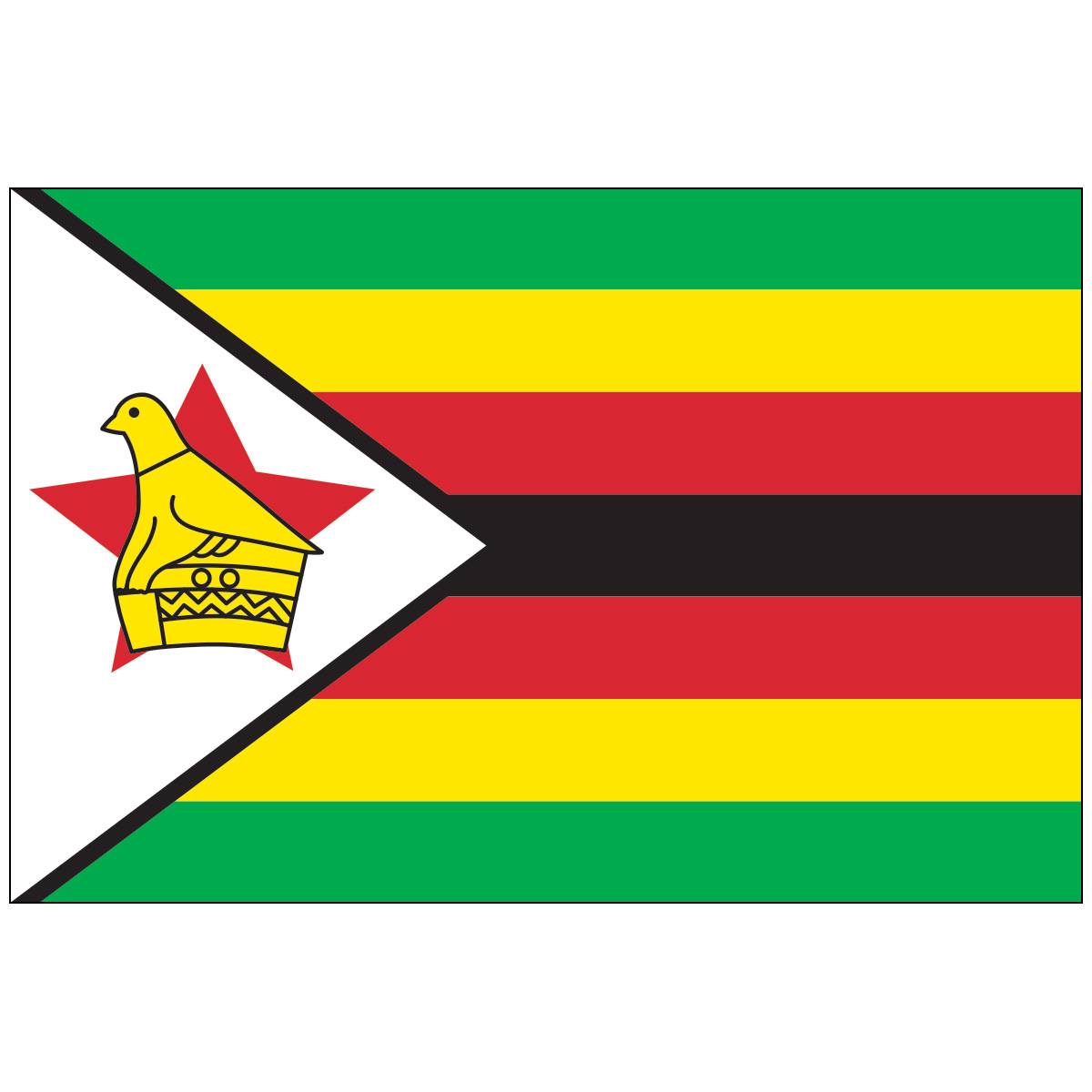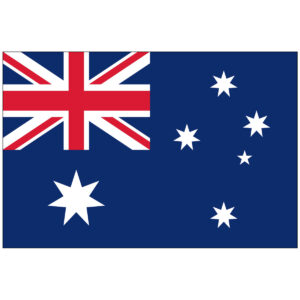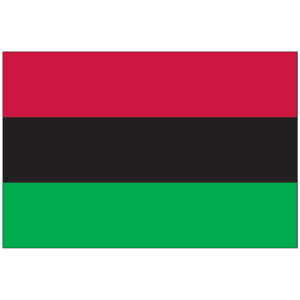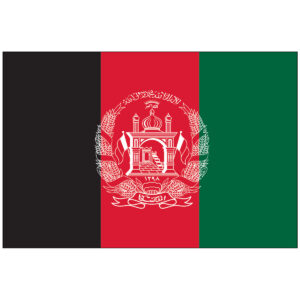About Our Zimbabwe Nylon Flag
The national flag of Zimbabwe consists of seven even horizontal stripes of green, gold, red and black with a white triangle containing a red five-pointed star with a Zimbabwe Bird. The present design was adopted on 18 April 1980. The soapstone bird featured on the flag represents a statuette of a bird found at the ruins of Great Zimbabwe. The bird symbolises the history of Zimbabwe; the red star beneath it officially stands for the nation's aspirations but is commonly thought to symbolise socialism, and the revolutionary struggle for freedom and peace. The design is based on the flag of Zimbabwe's ruling party, the Zimbabwe African National Union – Patriotic Front. The country now known as Zimbabwe was formally known as Southern Rhodesia from 1895 to 1980—although simply Rhodesia was used locally between 1964 until June 1979 after Northern Rhodesia obtained its independence—and then Zimbabwe Rhodesia between June and December 1979. Southern Rhodesia achieved responsible government in 1923, and thereby became a British self-governing colony following three decades of rule by the British South Africa Company. Following the granting of responsible government a flag was adopted which followed the standard British colonial practice, being a Blue Ensign, defaced with the shield from the Southern Rhodesian coat of arms. This basic design was used until 1968, although a light blue ensign was introduced in April 1964 following the break-up of the Federation of Rhodesia and Nyasaland. On 11 November 1968, three years after the predominantly white government unilaterally declared independence from Britain, a national flag based on a completely new design was adopted. This was a green-white-green vertical triband, charged centrally with the national coat of arms. This was the first national flag to contain the Zimbabwe Bird, which had been present in the coat of arms since 1924. In 1979, when the country reconstituted itself as Zimbabwe Rhodesia following the Internal Settlement between the government and moderate black nationalists, a new flag was adopted to mark the transition on 4 September of that year. The flag of Zimbabwe Rhodesia was designed by Flight Lieutenant Cedric Herbert of the Rhodesian Air Force and a member of the Rhodesian Heraldry and Genealogy Society. The design incorporated the pan-African colours of yellow, black, green and red, with the soapstone bird of Great Zimbabwe, representing an older, pre-colonial source of power and identity in yellow on a vertical black stripe, symbolising the importance of majority rule, and three horizontal stripes, one red representing the blood spilled in the struggle for majority rule, one white, representing the integral part of the European community and other minorities in all aspects of the country's life, and one green, reflecting the importance of agriculture to the country's well-being, but the new design had little support from black politicians, who described it as "the flag with two names", a reference to "Zimbabwe Rhodesia". In response, the Voice of Zimbabwe radio service operated by Robert Mugabe's ZANU PF from Maputo in Mozambique, carried a commentary entitled "The proof of independence is not flags or names", dismissing the changes as aimed at "strengthening the racist puppet alliance's position at the Zimbabwe conference in London". This flag was officially superseded in December 1979 when the UK took interim control of the country following the Lancaster House Agreement which ended the Rhodesian Bush War. The UK's Union Jack was used as the official flag of the country, although de facto the Zimbabwe Rhodesia flag continued to be flown, while fresh elections were held in February 1980. At midnight between 17 and 18 April 1980, the country was granted independence by the UK under the name Zimbabwe and a new national flag was adopted, the draft for which had been handed to the Minister of Public Works Richard Hove by an unspecified designer. The initial design did not include the Zimbabwe Bird. This was added at the suggestion of Cederic Herbert, who pointed out its uniqueness and history. The final draft went through the approval of the then-Prime Minister-elect Robert Mugabe. he adoption of the new flag coincided with the swearing-in of Canaan Banana as the country's new president. The Zimbabwe Bird, used on every flag since 1968, is based on a statue discovered from the medieval ruined city of Great Zimbabwe in the country's south-east.




